#muhca lucha
Text
Kids’ WB! and Diversity
“It’s so great to see a black superhero.”
This is a direct quote from one of my middle school classmates regarding Static Shock. Even as an eleven-year old girl, I realized the significance of that statement. In a world full of Supermen, Batmen, and Iron men, to have a hero like Static who looked like us and wasn’t a jive talking best friend or an aggressive criminal or a lazy bum was uplifting. Over fifteen years later, seeing diversity within cartoons wax and wane throughout the years has led me to revisiting Static Shock and the cartoon block it was on, Kids’ WB! In its 13-year history, WB has had several cartoons that are diverse in both their characters and their stories. I will go over the ones I’ve seen briefly, then discuss why the shows (mostly) were positive representations of diversity.
Waynehead (1996)
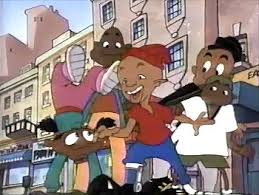
Waynehead was a 13-episode series that centered around Damey Wayans and his friends as they experienced life in their inner-city poor neighborhood. The series was created by Damon Wayans and based off of his own childhood (hence the name of the protagonist). Although the show never had a home release, reruns ran on Cartoon Network in the early 2000s.
Jackie Chan Adventures (2000)
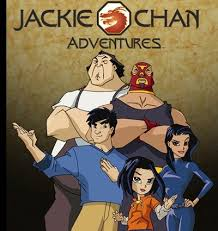
Created by John Rogers and produced by Jackie Chan, Jackie Chan Adventures stars a fictional Jackie Chan who, in his job as an archaeologist, uncovers magical artifacts that make him a target for different natural and supernatural enemies. Luckily, he has the help of his mischievous niece Jade, his magic-using Uncle, and Uncle’s apprentice and reformed villain Tohru, as well as his own martial arts skills. The series was able to last five seasons before ending in 2005.
Static Shock (2000)
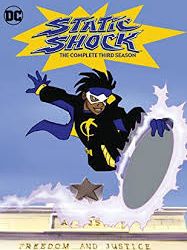
Static Shock was created by Dwayne McDuffie and based off of his Milestone Comics series Static. The cartoon follows Virgil Hawkins, a teen who gets caught in the middle of a gang war when chemicals in a nearby building cover all of the participants, given them unique powers. Virgil gains the power to control electricity and, as the superhero Static, protects Dakota City from other empowered individuals like himself. Static Shock ended in 2004 after four seasons.
¡Mucha Lucha! (2002)
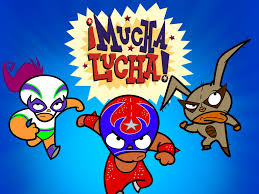
¡Mucha Lucha!, roughly “a lot of fighting” in Spanish, was about life in Luchaville, a city were everyone was a Lucha Libre- style wrestler. The series follows main character Rikochet and his best friends Buena Girl and The Flea as they go to school to learn how to be the best luchador they can be, while using and developing body-morphing signature moves along the way. ¡Mucha Lucha! was created by Eddie Mort and Lili Chin and lasted for three seasons with a direct-to-video movie, concluding in 2005.
Xiaolin Showdown (2003)
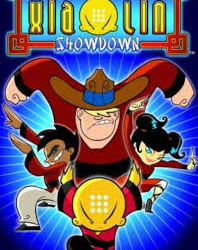
Created by Christy Hui, Xiaolin Showdown was about four children from different parts of the world training to become Xiaolin warriors that protected objects of power called Shen Gong Wu from various enemies. The children were Omi, the arrogant Dragon of Water from China, Raimundo, the laid-back Dragon of Wind from Brazil, Kimiko the tech-savvy Dragon of Fire from Japan, and Clay, the calm Dragon of Earth from the United States. Using different Shen Gong Wu and their own elements, the Xiaolin apprentices challenge their enemies to contests called Xiaolin Showdowns for control of the Shen Gong Wu, developing their skills and personalities as the series goes on. Xiaolin Showdown ended in 2006 after three seasons, although a spinoff named Xiaolin Chronicles that lasted another two seasons ran from 2013 to 2015 on Disney XD and Netflix.
Analysis
These five shows boasted widely diverse casts, but many shows during this time did. What makes these shows different, however, is that people of color were either the protagonists or the main focus of these shows. Other shows with diverse casts still usually had the male white lead who was the most developed character. So what are the benefits and drawbacks that come from having a mainly minority cast?
Positives
One of the biggest positives that comes from a POC-led cast is the variety of personalities. In white-led diverse casts, minority characters are often given one personality trait that they never deviate from. This is especially true if the trait is a common stereotype for the minority: Asian nerd, Black athlete, etc... In shows that multiple minority characters, each of them are given widely different personalities such that a stereotype is rarely establish about a particular minority in that particular show. Jackie Chan Adventures, for example, has Asian characters that range from smart, kooky, annoying, strong, evil, and more. Static Shock have African Americans that are outstanding citizens, criminals, and everything in between. This shows illustrated how varied POC are in real life.
Beyond a multitude of personalities is genuine character development. Throughout these series, POC characters who would often be reduced to static characters were allowed to grow and change throughout the series. In Xiaolin Showdown, Omi was humbled many times throughout the show, while Raimundo went from laid back but rash to a smarter and nobler warrior. Jackie and Jade’s relationship in Jackie Chan Adventures actually evolved throughout the course of the series. In these shows and more, the creators were not afraid to show their characters as imperfect-- this in turn leads to greater character development.
Given that the casts were mainly POC, these series often discussed topics that affected those communities. Both Waynehead and Static Shock discussed living in the inner city, homelessness, poverty, and violence, with the latter also discussing racism and black identity. Jackie Chan Adventures used both Chinese mythology and literature as inspiration for its stories as did Xiaolin Showdown to a lesser extent. Finally, ¡Mucha Lucha! is a celebration of the Mexican lucha libre tradition. Not only are the characters valued in these series, but so are their cultures as well.
Finally, seeing a POC as the main character at a time where most main characters were white was empowering for young POC like myself at the time. We got to see ourselves as heroes, martial artists, warriors, and more.
Negatives
Because the main focus of these series are POCs and their stories, many people may perceive elements of these shows stereotypical, from the strong Hispanic accents in ¡Mucha Lucha! to the exaggerated features of the characters in Waynehead to gang violence in Static Shock. Stereotypes in of themselves, however, are not bad-- reducing especially minorities characters to those stereotypes is. None of these series do that; all of the characters and situations are well developed in spite of the risk of stereotypes. It helps that most of these series were created and/or produced by people of the same ethnicity as the characters, which led to a more nuance portrayal of stereotypical issues rather than an exaggerated portrayal of them.
Caveats
Of course, there are many white-led cartoons that had well-developed POCs, including both X-Men and X-Men Evolution, Codename: Kids Next Door, As Told by Ginger, Gargoyles (although that was more creature-led) and many more. Minority characters were often just treated like another character rather than significant because of their minority, so they were just as developed as their white counterparts.
Furthermore, Kids’ WB! was not the only company that had cartoons led by diverse characters. From Nickelodeon’s Hawaiian-led Rocket Power, to Disney’s Black-led The Proud Family and Asian-led American Dragon Jake Long, to Cartoon Network’s Asian-led The Life and Times of Juniper Lee, many companies were creating cartoons that celebrated a variety of different backgrounds. What makes Kids’ WB! stand out is that it was a basic channel that everyone could watch rather than a cable channel that many could not pay for. Kids’ WB! also had relatively more diverse series than its basic channel contemporaries like One Saturday Morning or Fox Box/4Kids TV. However, although ethnically diverse, Kids’ WB! was not diverse in other ways.
All of the shows I discussed in this essay have male leads. Even though several of them have well-rounded female characters like Jade in Jackie Chan Adventures and Buena Girl in ¡Mucha Lucha!, Kids’ WB! have only a handful of shows that starred females, which were either cancelled early, borrowed from Cartoon Network, or, in the case of Cardcaptors, edited to give more attention to male characters. The studio wanted to attract more boy viewers rather than girl viewers to sell toys; ironically, this is the same excuse that many studios use for not focusing on ethnic characters-- that white children will not resonate with them.
Another diversity issue is the lack openly queer or genderqueer characters. Now, this is more of a industry-wide problem than just a Kids’ WB! problem. Even today, when we’re getting more queer representation in children’s programming like Steven Universe, Adventure Time, She-Ra and the Princesses of Power, The Legend of Korra, and even Arthur, there is still a lot of pushback from “moral” guardians about this type of inclusiveness. Kids’ WB!, however, has a specific example of this. Ritchie Foley, Virgil’s best friend in Static Shock, is a reimagining of Rick Stone from the Static comics. Rick is gay in the comics, and McDuffie revealed after the show was over that Ritchie was too, which would have been an uphill battle now let along in the early 2000s.
Conclusion
Rightfully, more people are demanding more diversity in their media. People want to see shows and movies that are led by ethnic, religious, gender, sexual, and other minorities because that reflects the world they live in. It reflects them as people. Two decades later, it is amazing how Kids’ WB! had ethnically-diverse series that portrayed Black and Asian and Latinos as both heroic and flawed, noble and cruel, intelligent and foolish, and everything in between. Rather than having one minority character to fill a quota, Kids WB! had a multitude of minority characters that accurately illustrate how varied and complex real-life ethnic minorities are.
#kids wb#kids' wb#kids wb!#kids' wb!#waynehead#jackie chan adventures#Static Shock#muhca lucha#xiaolin showdown#diversity#race#ethnicity#ethnic#black#black people#asian#latino#hispanic#mexican#chinese#African American
94 notes
·
View notes